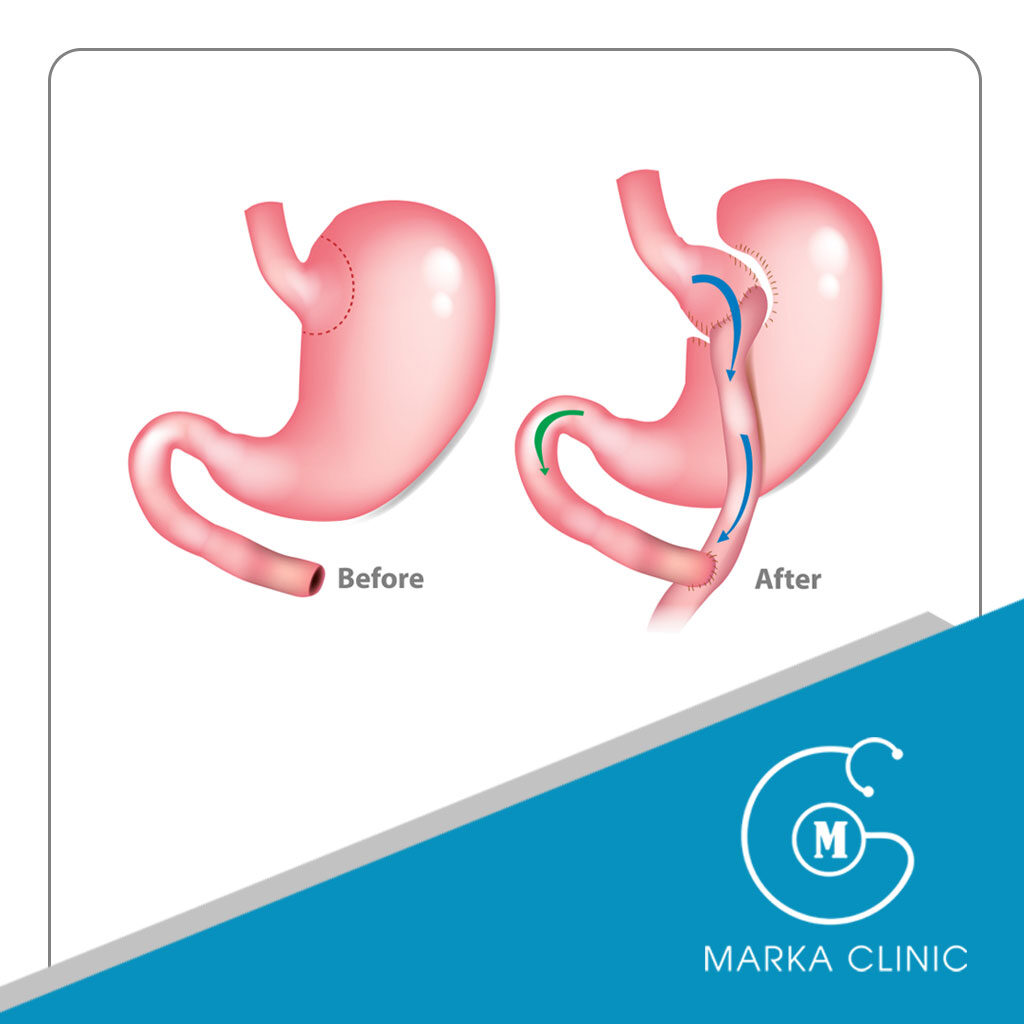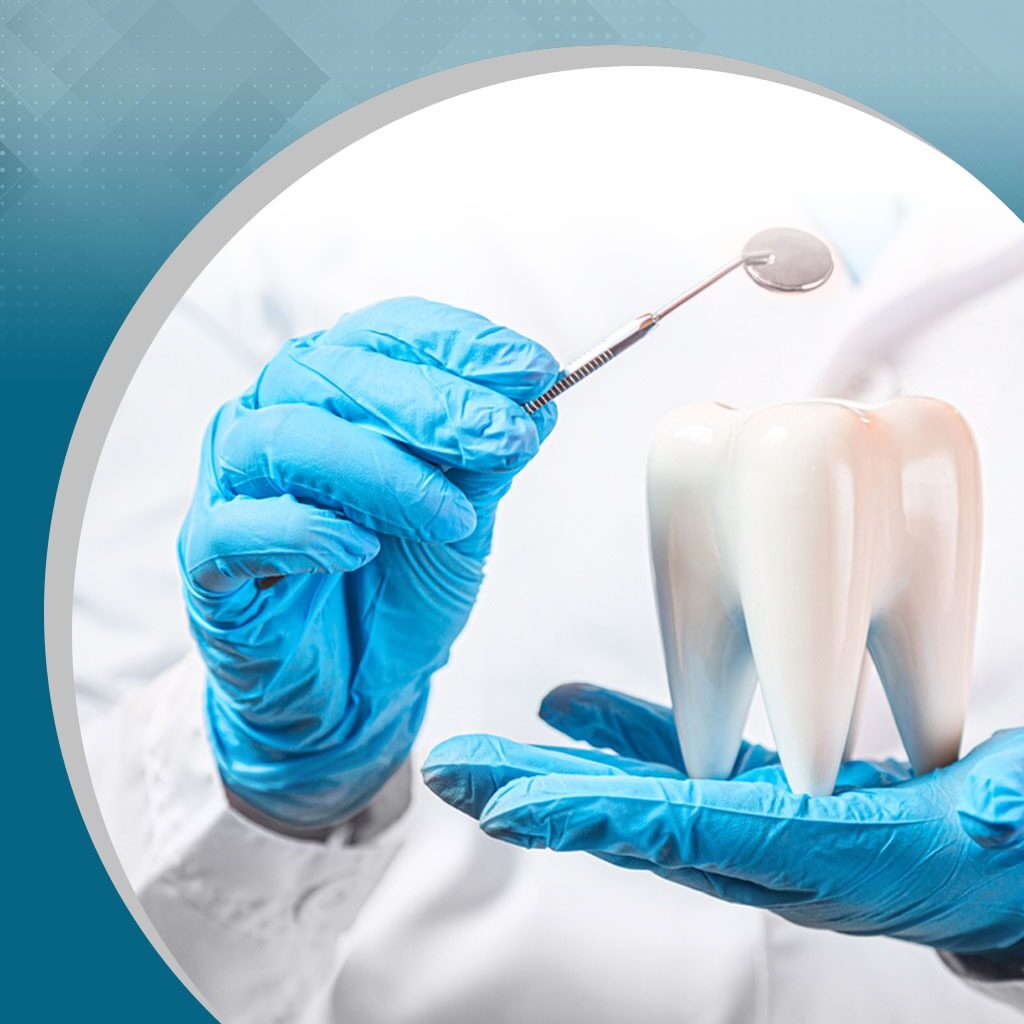Dental implant surgery is a process by which the roots of the teeth are replaced with metal abutments similar to screws, and the damaged or missing tooth is replaced with an artificial tooth that closely resembles real teeth in terms of appearance and performance. Dental implant surgery may provide an acceptable alternative to dentures or dental bridges that do not fit as required, and may provide an option when natural tooth roots do not allow dentures or bridge replacements.
How dental implant surgery is performed depends on the type of component being implanted and the condition of the jawbone. Dental implant surgery may include several operations. The main benefit of the implants is to provide a solid support for the new tooth — this process requires complete healing of the bone around the implant. Since this healing takes time, the process may take several months.
Why is this done
Dental implants are surgically placed in your jawbone, where they act as the roots of missing teeth. As a result of the titanium in implants fusing with the bones of your jaw, the implants won’t slide, make noise, or cause bone damage as might happen with a fixed bridge or denture. Nor do the materials decay like your teeth, while a regular supporting bridge can decay.
In general, dental grafts may be suitable for you if:
- You have one or more missing teeth
- You have a fully developed jaw bone
- Have bone suitable for securing grafts or able to accommodate bone graft
- You have healthy oral tissues
- You do not have health conditions that will affect bone healing
- You are unable or unwilling to wear dentures
- You want to improve your speech
- You have resolved to devote several months to the operation
- Don’t smoke tobacco
Risks
Like any surgery, dental implant surgery poses some health risks. Problems are rare, however, when they do occur they are usually minor and easily treatable. Risks include:
- Inflammation at the transplant site
- Injury or damage to surrounding structures, such as teeth or other blood vessels
- Nerve damage, which can cause pain, numbness or tingling in your natural teeth, gums, lips or chin
- Sinus problems, when dental implants are placed in the upper jaw, it protrudes into the sinus cavities
How to prepare
The dental implant planning process may involve a variety of specialists, including a doctor who specializes in conditions of the mouth, jaw and face (oral and maxillofacial surgeon), a dentist who specializes in treating structures that support teeth such as gums and bones (periodontist), or a dentist who designs He or she fits artificial teeth (prosthodontist) or sometimes an ear, nose and throat specialist (otolaryngologist).
Because dental implants require one or more surgical procedures, you should have a thorough evaluation in order to prepare for this surgery, including:
- Comprehensive dental examination. Dental X-rays and 3D images may be taken and models of the teeth and jaw made.
- Review your medical history. Tell your doctor about any medical conditions and any medications you’re taking, including prescription and over-the-counter medications and supplements. If you have certain heart conditions or have bone implants, your doctor may prescribe antibiotics before surgery to help prevent infection.
- treatment plan. Depending on the situation, this plan takes into account factors such as the number of teeth that need to be replaced, the condition of the jawbone and the remaining teeth.
To control pain, anesthesia options during surgery include local, sedation or general anesthesia. Talk with your dental professional about the best option for you. Your dental care team will give you instructions about eating and drinking before surgery, depending on the type of anesthesia you have. If you’re going to have sedation or general anesthesia, plan to have someone drive you home after surgery and plan to rest for the rest of the day.
What you can expect
Dental implant surgery, in many cases, is an outpatient surgery that takes place in stages, with time to heal. The process of placing a dental implant includes several stages, including:
- extract a damaged tooth
- Jawbone preparation (graft), when needed
- Dental implant replacement
- Bone growth and healing
- stent installation
- Installing an artificial tooth
The entire process can take several months from start to finish. Most of the time is devoted to healing and waiting for new bone to grow in the jaw. Depending on your situation, the specific action being taken or the materials being used, sometimes some steps can be combined.
If the jawbone is not thick enough or too soft, you may need a bone graft before having dental implant surgery. This is because vigorously chewing puts too much pressure on the jawbone, and if the bone is not suitable to support the dental implant, surgery is likely to fail. The bone graft can form a more solid base for the dental implant.
There are many bone graft materials that can be used to rebuild the jawbone. Available options include natural bone grafts, such as grafts derived from another site in the body, or artificial bone grafts, such as bone substitute materials that provide support structures for new bone growth. Talk to your doctor about the best options for you.
It may take several months for the implanted bone to grow enough to form new bone to support the dental implant. In some cases, you may need only a small bone graft, which can be done at the same time as the dental implant surgery. The condition of your jawbone determines how much progress you make.
Dental implant placement
During surgery to place a dental graft, the oral surgeon makes a cut to open your gums and expose the bones. Holes are drilled into the bone where the dental implant abutment will be placed. Since the abutment will act as the tooth’s root, it is implanted deep into the bone.
At that point, you will still have a gap where the tooth is not. Temporary dentures may be placed to preserve appearance, if necessary. You can remove the dentures for cleaning and while you sleep.
Waiting for the bone to grow
Once the metal graft wedge is placed in your jawbone, osseointegration begins. During this process, the jawbone grows inward and unites with the surface of the dental implant. This process, which can take several months, helps provide a solid base for your new artificial teeth — just as roots do for your natural teeth.
support position
When the bone fusion is complete, you may need additional surgery to place the abutment — the piece on which the crown will eventually be attached. This minor surgery is usually performed after local anesthesia on an outpatient basis.
To place the stent:
- The oral surgeon reopens the gums to expose the dental implant
- The abutment is placed in the dental implant
- Then, the gum tissue heals around the abutment rather than on it
In some cases, the abutment is inserted into the metal dental implant post when the post is implanted. This means that you will not need an additional surgical step. Because the abutment extends past the gum line, it’s nonetheless visible when the mouth is opened — and remains until the dentist completes the replacement dental implant. Some people don’t like this look and prefer to have the stent in a separate surgery.
After the abutment is placed, the gums should heal approximately two weeks before the artificial tooth is placed.
Choosing a new artificial tooth
Once the gums have healed, many of the remaining impressions of the mouth and teeth will be taken. These dental impressions are used to create the crown — an artificial tooth that looks as if it were real. The crown cannot be placed until the jawbone is strong enough to support the use of the new tooth.
You and your dentist can choose removable or fixed artificial teeth, or a combination of the two:
- removable teeth. This type is similar to a traditional removable denture and can be part of a denture, or a complete denture. It contains white artificial teeth surrounded by pink plastic gums. It is attached to a metal frame that is attached to the implant support, and is held firmly in place. It can also be removed easily for restoration or for daily cleaning.
- fixed teeth. In this type, the artificial tooth is secured to always remain in the single implant abutment. You cannot remove the tooth for cleaning or during sleep. In most cases, each crown is fitted to its own dental implant. However, because the implants are so strong, it is possible to replace several teeth with one implant, if those teeth are next to each other.
After the operation
Whether you perform dental implant surgery in one stage or in multiple stages, you may encounter some of the traditional problems associated with any type of dental surgery, such as:
- swollen gums and face
- Bruising of the skin and gums
- Implantation pain
- slight bleeding
You may need to take pain relievers or antibiotics after dental implant surgery. If a tumor, pain, or other problem worsens in the days following surgery, contact your oral surgeon.
After each stage of surgery, you may have to eat soft foods while the surgical site heals. In general, the surgeon will use sutures that dissolve on their own. If the stitches aren’t self-dissolving, your doctor will remove them.
Results
Most dental implants are successful. However, sometimes the bone may not fuse sufficiently into the metallic implant. Smoking, for example, may contribute to implant failure and complications.
If the bone doesn’t fuse enough, the implant will be removed and the bone cleaned, and you can try the procedure again in about three months.
You can help keep your artificial teeth — and your remaining natural teeth — working so they last longer if you do the following:
- Practice good oral habits. Just as with natural teeth, keep implants, artificial teeth, and gum tissue clean. Specially designed brushes, such as an interdental brush that glides between teeth, can help clean nooks and crannies around the teeth, gums, and metal wedges.
- Visit the dentist regularly. Schedule dental checkups to ensure the health and safety of the implants and follow the advice of professional cleaning procedures.
- Avoid harmful habits. Don’t chew hard objects such as ice and hard candy, which can break crowns — or your natural teeth. Avoid staining tobacco and caffeinated products. And seek treatment if you feel the teeth clenching.










